4 hours into my flight to SF for the week and thought it’d be good to spend the flight working on my proposal draft. WIP but sharing here to work in public:
Proposal Draft
Proposal Questions
Below is an outline of what you should address in your thesis proposal. In its most straightforward form, you can simply answer these questions. However, if you want to include supplemental material (images, other media) that’s great, as long as the below questions are covered. Anything additional that you believe will clarify your intention and vision is helpful!
Working Title (Optional)
You don’t really need a title at this stage, but it can be fun and even helpful!
On the Sublime and Divine: Explorations into AI & Technological Spirituality
Three Keywords that Describe your Proposed Work
These can be topics, themes, technologies, moods…
Sublime, Artificial Intelligence, Physical Computing
What is your central question?
(approx 2-3 sentences)
Your thesis should have more potential for expansion than a one-off assignment or project. In order to ensure that, it can be helpful to frame the idea you are exploring as a research question. What is a central question, problem statement, or area of inquiry that you will try to investigate and address through your research and creative practice? Here are some guiding principles we have found helpful in working through your question:
- Is it something that you are genuinely interested and curious about?
- Is it broad enough that it doesn’t allow for simple factual answers (yes/no responses)?
- Is it narrow enough that it can be answered/addressed given the available time and resources?
If you are looking for inspiration, the 2015 ITP thesis archive was organized by central questions.
If spirituality can help us process systems greater than ourselves, how might we use its teachings and aesthetics to better understand rapidly advancing technology? Specifically, how might we use music as an intermediate space between Technology and The Divine, in order to help us better understand our relationship with both?
Guiding Questions:
- What are the basic principles of spiritual and religious aesthetics?
- What are the fundamental principles that invoke a feeling of wonder and awe?
- How will our relationship to technology and machines change as they scale in “intelligence”?
- How might religion and spiritual teachings on higher consciousness help us process and understand this shift?
What is one way you envision realizing this as a project?
(250-350 words)
At this stage – you probably know SOMETHING about your thesis – even if you think you don’t! There are (at least) two ways of thinking through this question:
Describe a process including “known unknowns”
For example: I plan to do x type of research, for x amount of time, with a focus on x. This could culminate in x, which I could achieve in x, y, or z method. I don’t know which method, but I plan to let my research guide me based on x.
In this version, it’s helpful to express whatever you know AND articulate your “known unknowns”. Some of you may be starting with a clear idea of a form and less of the context. Some of you may have an idea for a research trajectory, but aren’t sure what kind of form it might take. Some may have totally different “knowns” and “unknowns”. Talk it out, how do you plan to figure it out?
Take a leap of faith: describe something concrete (even if you’re unsure).
In this version, you should try to paint as clear a picture as you can, in your reader’s mind, of what the end result of your work could possibly be (even if you’re totally unsure and making it up). Then, try your best to explain how you think you would execute that work, including a basic timeline.
In either case, answering these questions will help:
- What are the key steps necessary to make this a reality?
- Are there key milestones you will need to meet?
- What techniques, tools, materials are you planning to use and why?
- Is there a community, space, or audience you want to access?
- What further research and/or skill-building will you need to do?
- What form (or forms) might your work take?
- How does what you plan to do address your Thesis Question?
- Which element is the focus of your work? (For instance: a specific research methodology, an innovative technique, framing the work, gaining expertise in a specific topic, producing a final product, honing a technique there are many possibilities here!)
By the end of the term, this project will manifest itself through the following artifacts:
- Knowledge product(s) on music, machine learning, and AI (blog post, poster, graphic series, public notes, zine)
- Knowledge product(s) on wonder, the sublime, and religious architecture (annotated are.na channel, documentation blog, guide, zine)
- Prototype for a Musical Interface powered by Machine Learning, expressed through the aesthetics researched in #2
It will be important to spend the next 10 weeks focused equally on Research and Making. Each week should end with a new step in research (new book, article) and art that attempts to explore the research (p5.js sketch, paper sketch, zine, sculpture)
Jumping ahead, I imagine this will look like a physical sculpture/interface that allows a user to explore musical latent space through movement, and have this movement dictate musical output and accompanying visuals.
Why is this important to you?
(approx 2-5 sentences)
- Why do you want to do this? Be as honest as possible!
- Why you, why here, why now?
- What impact do you hope your thesis has?
This concept is interesting to me for a few reasons:
- I want to learn how to develop engaging artwork, and in the future pull from this research on wonder and divinity to build powerful interactive installations
- I have a strong curiosity about the fundamentals of music and want to learn more about how music works both physically and emotionally
- I work in AI, and want to learn more about the engineering behind machine learning systems
- I want to build physical objects, and a musical interface is a great way to further develop my skills in physical computing
Why me, why here, why now?
- AI systems and generative modeling are extremely relevant right now, and will continue to be important for the foreseeable future
- The world is becoming increasingly harder and harder to understand as the systems we engage with become more and more opaque
- As a technologist fluent in art, technology, music, and ai, I have a unique perspective on the intersection between ideas and a want to communicate these ideas to a broader audience
What impact do you hope your thesis has?
- I hope this work can inspire awe and wonder in participants, and create moments of reflection on the systems that we exist in that are larger than ourselves.
- I also hope this work can raise critical questions on AGI, and explore how a spiritual framing of AI may be beneficial/detrimental to humanity
What are your influences and inspirations? What is the “ecosystem” of your work?
(10 links, each with approx 1-2 sentence description – this is your initial bibliography!)
- Share 10 links to references that directly relate to your project. These can be books, films, other artworks or related projects. For each, write a sentence or two as to how they relate to your work.
- Please include: at least 1 article from an academic journal, 1 prior art reference (ie, similar work), and one theoretical text (could be a book or article – something which points to a social or critical context). Consider reaching out to Margaret Smith (ITP/IMA Librarian) for guidance!
- You may also include links to any projects you have already done yourself that you intend to leverage and/or build upon.
Music Theory: A collection of resources discussing the physical and conceptual fundamentals of music theory
- Ableton: Learning Synths – An introduction to electronic music and the sound waves that make modern music
- Sonic Writing: Technologies of Material, Symbolic, and Signal Inscriptions – (From Luisa Pereira’s NIME) Explores how contemporary music technologies trace their ancestry to previous forms of instruments and media
- Theremin in the Press: Instrument remediation and code-instrument transduction – Shows how the theremin as a new musical medium enacted a double logic throughout its century-old techno-cultural life
Musical Interface Design: Materials on musical interface design
- Push, Turn, Move – Teaches how electronic musical instruments are designed for the special needs of the most expressive, lyrical, and demanding things in the music world: human beings.
- A NIME Reader: Fifteen Years of New Interfaces for Musical Expression – What is a musical instrument? What are the musical instruments of the future? This anthology presents thirty papers selected from the fifteen year long history of the International Conference on New Interfaces for Musical Expression (NIME).
- Music as a mirror of mind
AI & Machine Learning: Introduction to the math and computer science behind Artificial Intelligence and Machine Learning
- NN → Zero to Hero – A course by Andrej Karpathy on building neural networks, from scratch, in code.
- https://github.com/aaronsherwood/artintel – Machine Learning for Artists (NYUAD Spring 2018)
Philosophy of Wonder, Spirituality, and the Divine: Non-denominational background texts on spirituality, religion, and sublime aesthetics
- Constructing the Ineffable – Contemporary Sacred Architecture
- Sacred Spaces: Contemporary Religious Architecture
- Strange Wonder: The Closure of Metaphysics and the Opening of Awe (Insurrections: Critical Studies in Religion, Politics, and Culture)
- Reclaiming Wonder: After the Sublime (Incitements)
- Wonder: A Grammar
- Wonder : from emotion to spirituality
- The Age of Spiritual Machines
Further Inspiration
- Google Magenta
- Brian Oakes
- James Turrell
- NIME
- Thor Magnusson
Optional Questions
(no more than 1 sentence each)
- What are your areas of strength that you think you can leverage in this process?
- What areas do you hope to work on through this process?
- What specific technologies, methodologies, or processes do you hope to explore in more depth?
My areas of strength:
- Technical expertise
- Knowledge of the field
- Curiosity for aesthetic exploration and art direction
What areas do you hope to work on:
- Research and research presentation
- Experiential design
- Visual Design
- Fabrication and Industrial Design
Technologies to explore:
- Machine Learning and AI (Tensorflow/Pytorch)
- Visual Design, Layout, Typography (Figma/Illustrator)
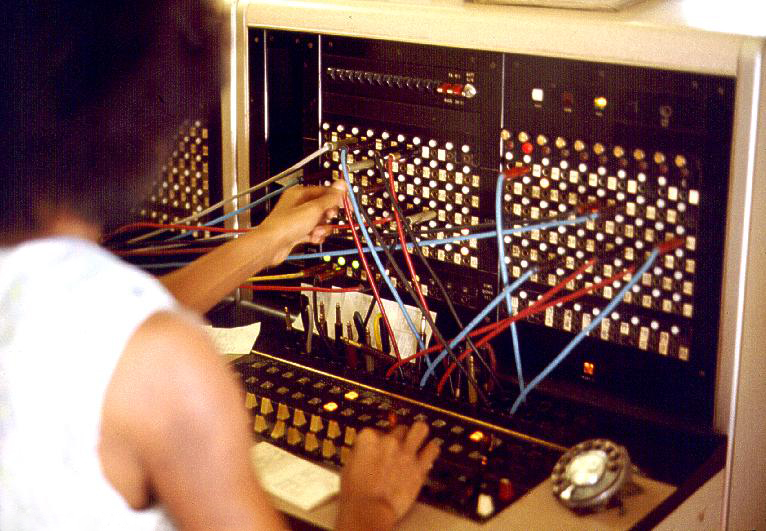
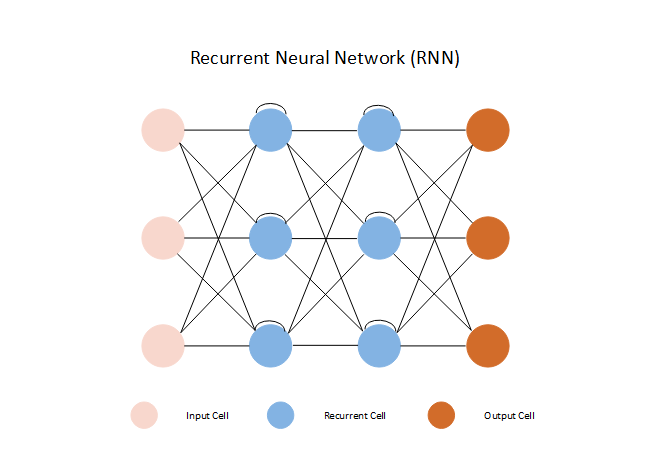
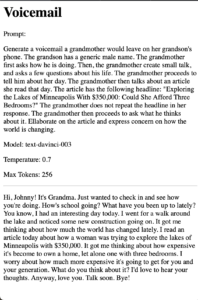
 Class Playlist
Class Playlist 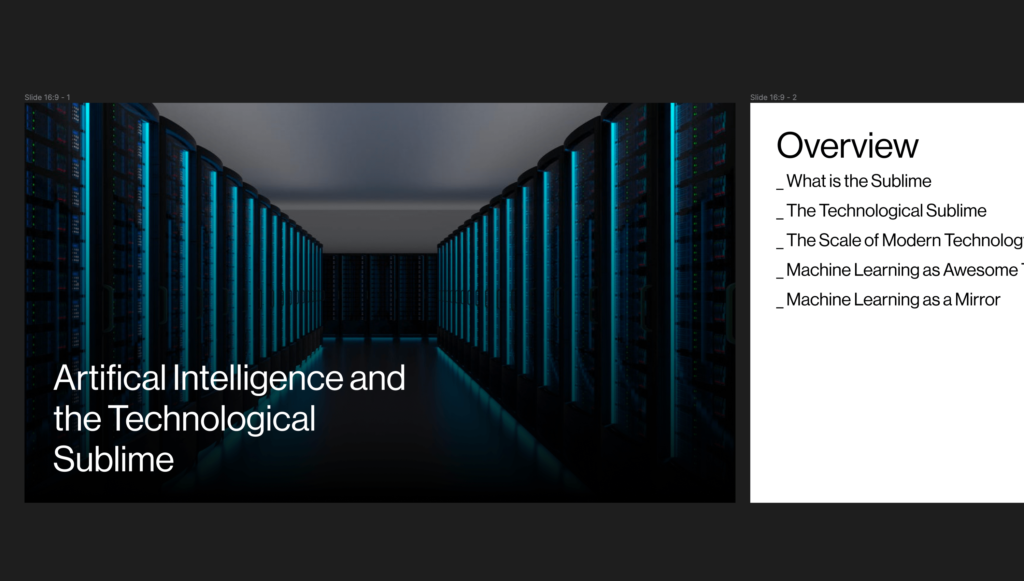
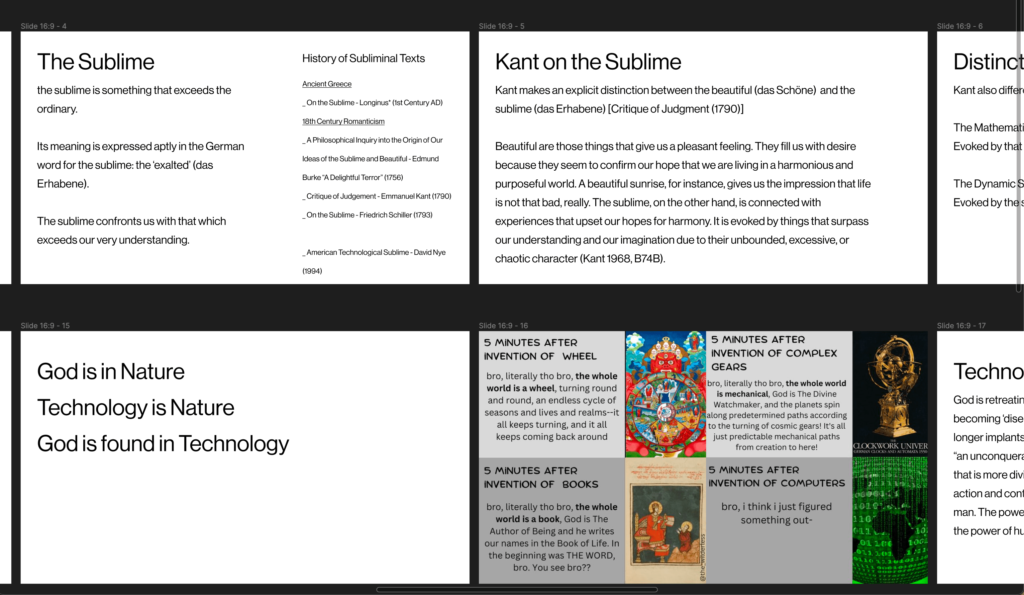
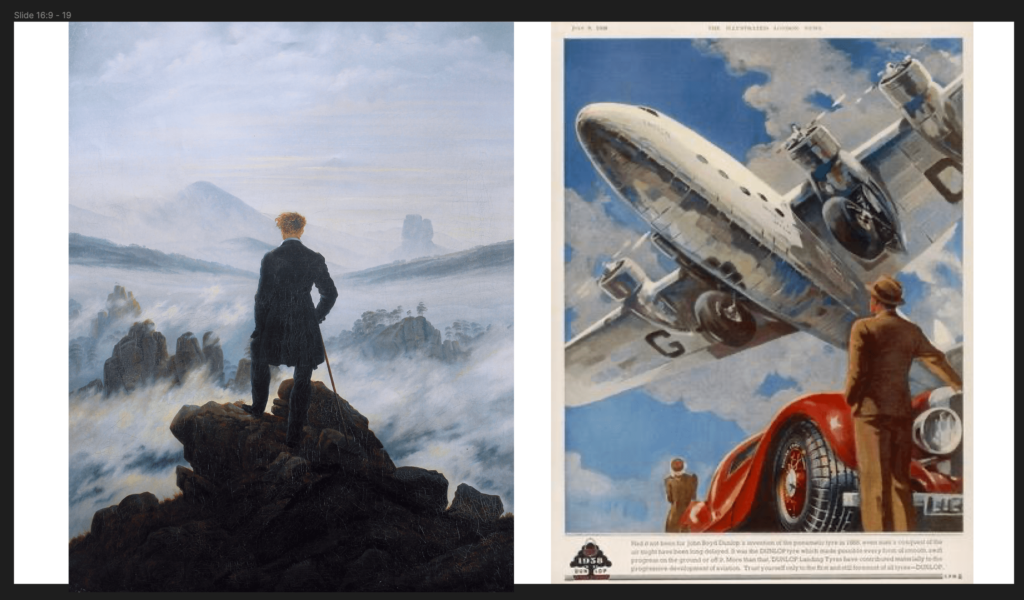
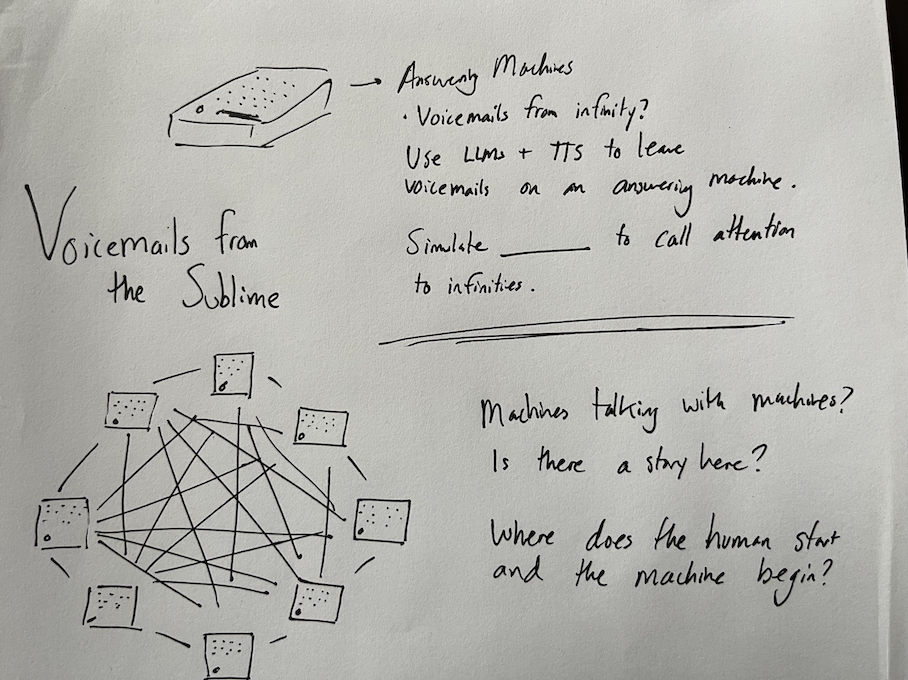
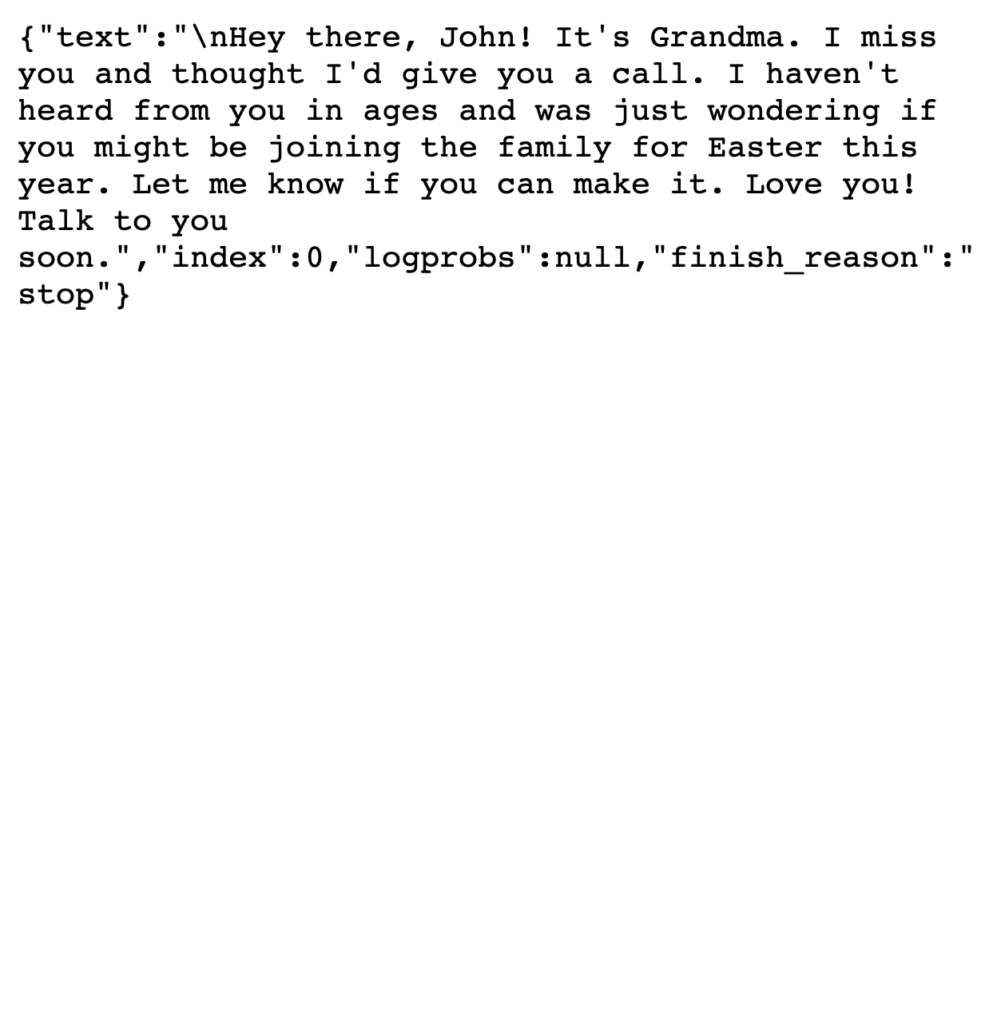
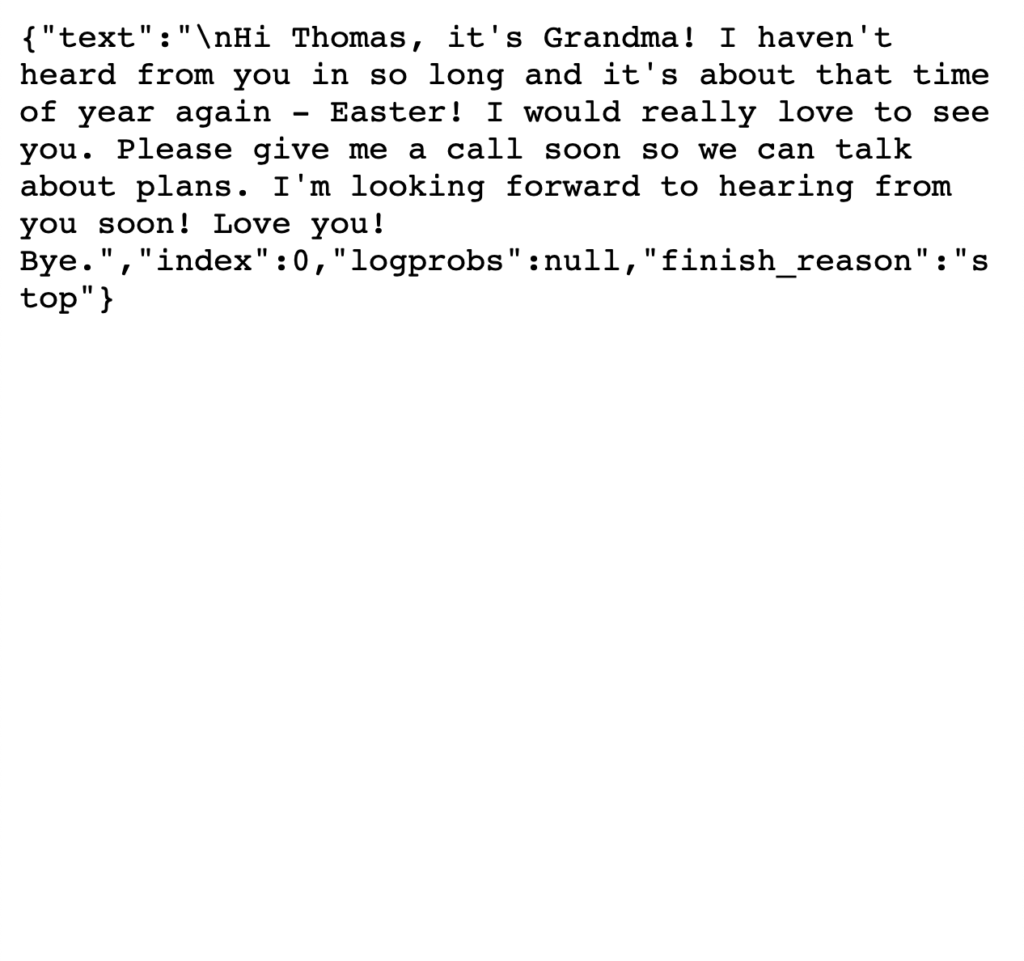
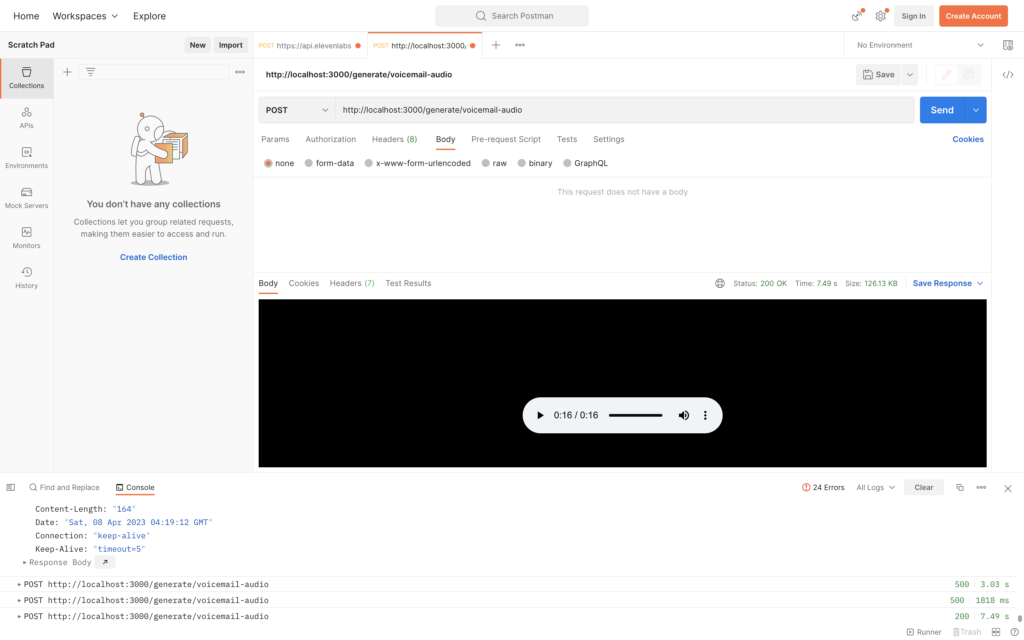
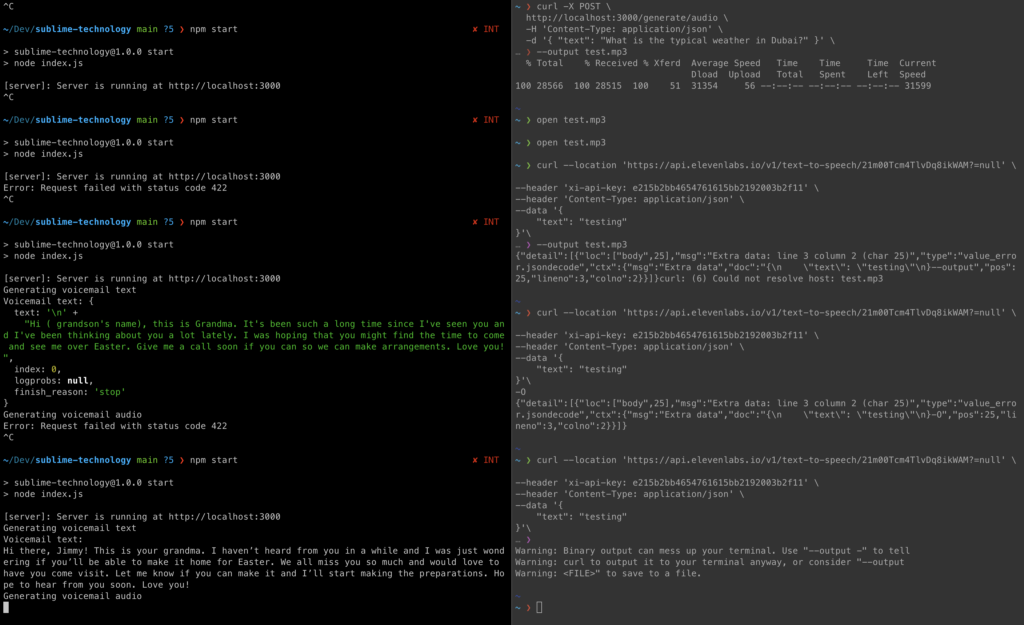


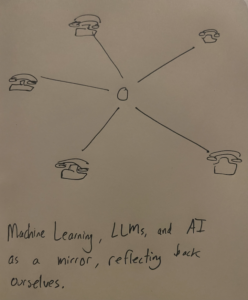

 . With that feedback, I really spent time with my thoughts and references to specify exactly what I wanted to focus on in terms of AI, Spirit, Consciousness, and Spirituality. These are very broad ideas with plenty of rich overlap, but for the sake of my thesis, I need to narrow !!
. With that feedback, I really spent time with my thoughts and references to specify exactly what I wanted to focus on in terms of AI, Spirit, Consciousness, and Spirituality. These are very broad ideas with plenty of rich overlap, but for the sake of my thesis, I need to narrow !!
